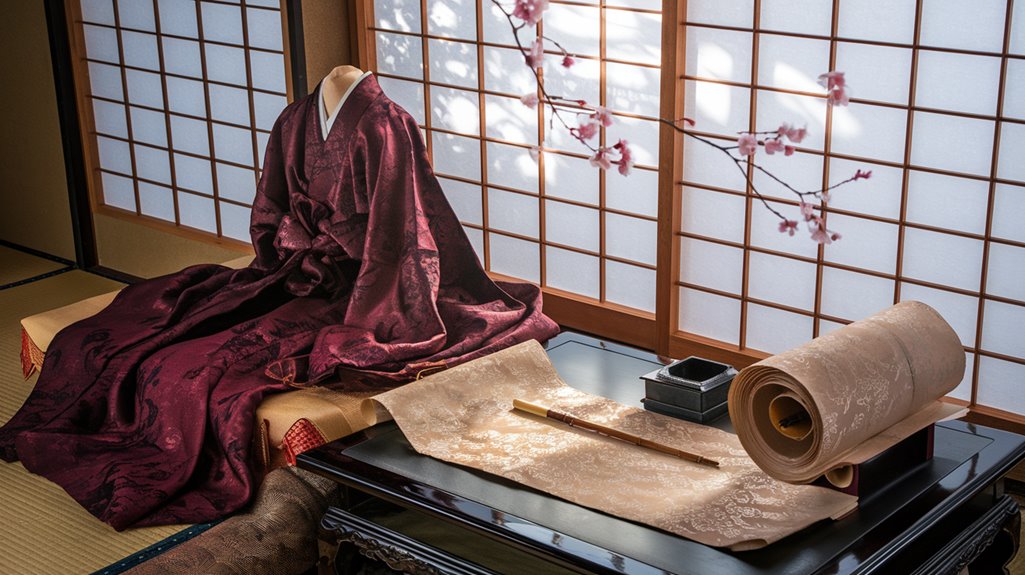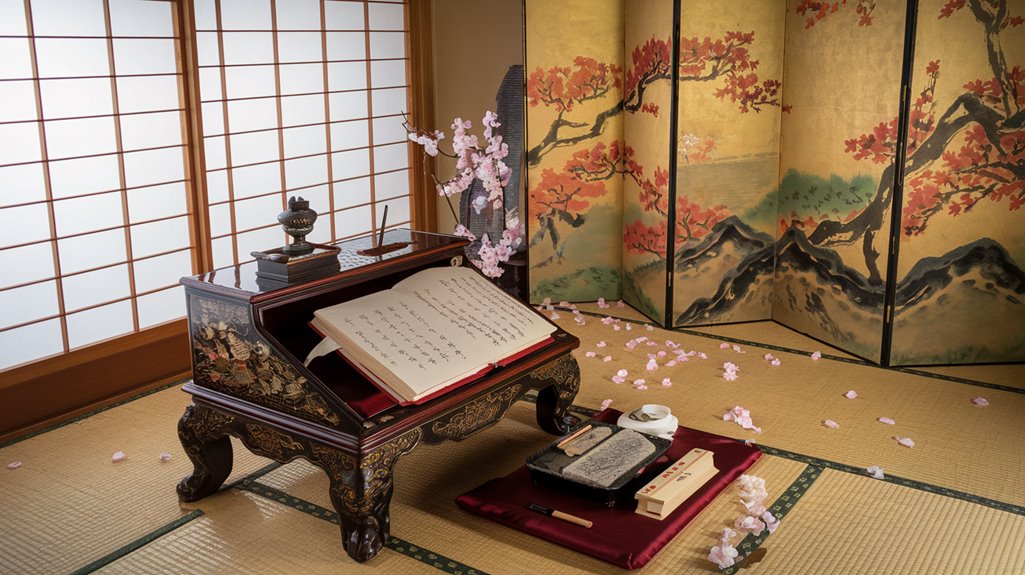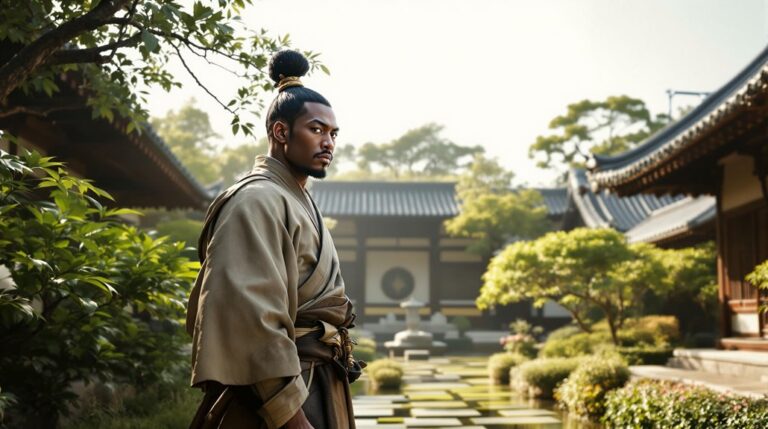Women Authored Most of Early Japanese Literature
Like a hidden garden blooming in plain sight, Japan's early literary landscape flourished primarily through women's hands. You'll find it fascinating that female writers dominated the Heian period's cultural scene, wielding the flowing strokes of hiragana to tell their stories while men stuck to formal Chinese. Their works weren't just creative expressions—they were revolutionary acts that shaped Japan's literary identity. What drove these women to pick up their brushes and change history forever?
The Heian Era: A Golden Age for Female Writers
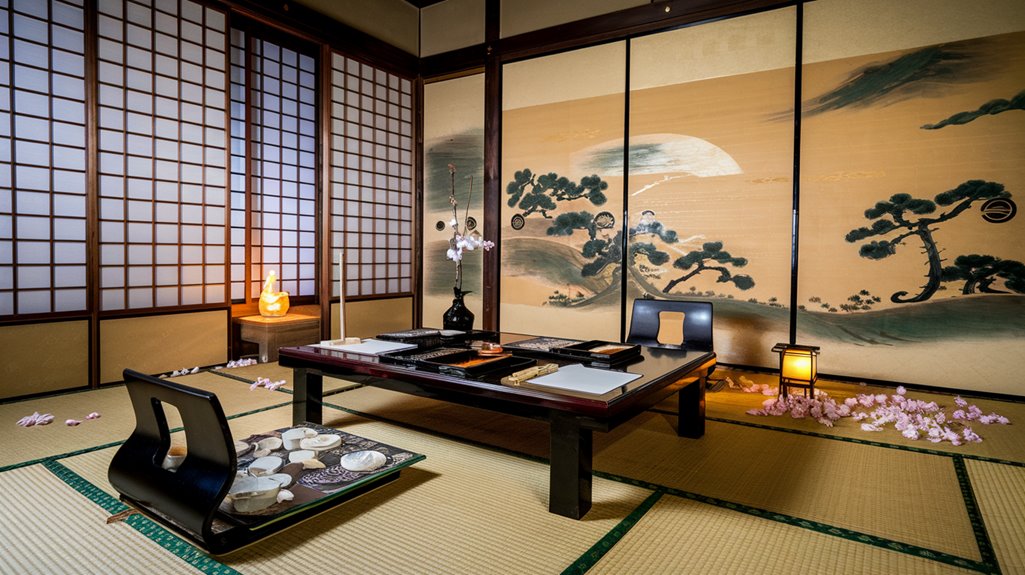
While much of ancient literature worldwide was dominated by men, Japan's Heian era (794-1185) stands out as a remarkable period when women led the way in literary achievement.
You'll find that several factors in Heian society made this possible, including the unique dual writing system that allowed women to write in vernacular Japanese while men focused on Chinese.
In the elegant literary salons of the imperial court, women found time to write because they were often confined to their homes. Their education included impressive studies in Chinese classics and calligraphy.
This seclusion, combined with the court's high regard for artistic pursuits, created the perfect environment for female writers to flourish.
They pioneered new genres like tales (monogatari) and poetic journals, with luminaries such as Murasaki Shikibu and Sei Shōnagon producing works that would become cornerstones of Japanese literature. Women used the hiragana script, which was specifically known as women's writing.
Language and Script: How Women Claimed Japanese Literature
Japanese women forged their own path in literature by developing and mastering a revolutionary writing system known as hiragana. While men of the imperial court exclusively used Chinese characters (kanji) for official documents, women turned their exclusion from formal education into an opportunity for innovation.
They developed hiragana from the cursive forms of kanji, creating a more accessible writing system for women's expression. This innovation proved transformative. Known as "onnade" or women's writing, hiragana allowed female authors like Lady Murasaki Shikibu to produce masterpieces such as The Tale of Genji. Elite society initially rejected this feminine script, though it would later gain widespread acceptance.
You'll find it interesting that women's determination to communicate led to a lasting impact on Japanese culture. Their writing system became so effective that even male writers eventually adopted it, contributing to today's standardized Japanese writing system that combines hiragana, katakana, and kanji.
Notable Female Authors and Their Masterpieces
With the development of hiragana, female authors emerged as powerful voices in early Japanese literature, creating works that still captivate readers today.
Murasaki Shikibu's legacy stands unmatched with "The Tale of Genji," widely recognized as the world's first novel. Her work demonstrates psychological depth and insight into human relationships and emotions. While Murasaki crafted intricate fictional narratives, Sei Shónagon's observations of court life in "The Pillow Book" provided intimate glimpses into Heian society.
You'll find equally compelling works from their contemporaries: Izumi Shikibu's passionate love poetry, Ono no Komachi's intense verse, and Michitsuna no haha's groundbreaking "Kagero Diary."
These women didn't just write; they established literary traditions that would influence Japanese culture for centuries to come. Their mastery of language and keen insights into human nature created an enduring foundation for Japanese literature. This tradition of bold female expression continued into the 20th century when Raicho Hiratsuka founded Seito literary magazine, Japan's first publication created by and for women writers.
The Evolution of Women's Literary Magazines
As feminist consciousness grew in early 20th-century Japan, literary magazines emerged as powerful platforms for women's voices and social reform.
You'll find that Seitō (1911-1916) led this revolution as Japan's first women-run literary magazine, publishing 52 groundbreaking issues despite government censorship and seizures.
The magazine faced multiple bans for addressing topics like female sexuality and advocating for marriage based on love. These feminist publications didn't just challenge social norms; they transformed Japan's literary landscape. The magazines maintained a fundamentally literary focus while reporting on international issues and labor movements.
Through literary activism, magazines like Seitō and Nyonin Geijutsu (1928-1932) introduced global feminist ideas while providing spaces for Japanese women to discuss taboo topics like sexuality and gender roles.
They published works from over 110 contributors, including influential writers like Yaeko Nogami and Miyamoto Yuriko.
Though both magazines faced bans and eventual closure, their legacy lives on in contemporary Japanese literature, inspiring generations of women writers to continue pushing boundaries.
Themes and Influences in Japanese Women's Writing
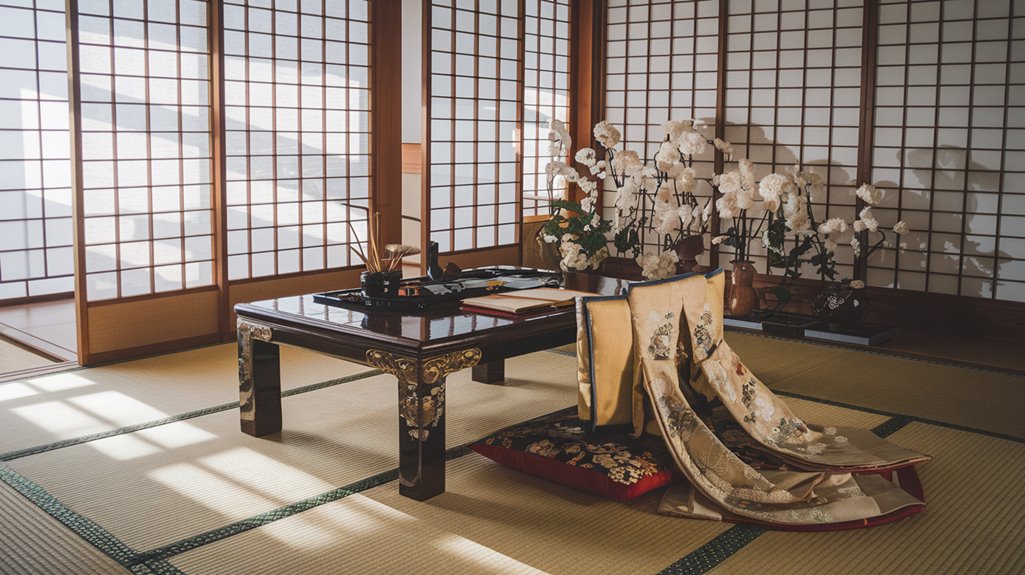
Throughout history, women have profoundly shaped Japanese literature, especially during the Heian period when they dominated literary creation while male aristocrats focused on Chinese writing.
These pioneering authors established a rich literary legacy that continues to influence modern Japanese literature.
Feminist themes have been central to Japanese women's writing, with authors like Murasaki Shikibu and Sei Shōnagon challenging societal norms through their works.
You'll find consistent exploration of women's struggles with marriage, motherhood, and identity in a patriarchal society.
From Higuchi Ichiyo's powerful social commentary to Banana Yoshimoto's contemporary perspectives on family dynamics, female authors have continually pushed boundaries in their writing. The Meiji period shift brought more realistic and critical depictions of women in literature.
Their works often subvert traditional gender roles, presenting strong female protagonists who question and defy oppressive social expectations.
The launch of Seito magazine in 1911 provided women writers with their first dedicated platform for literary expression and feminist discourse.

